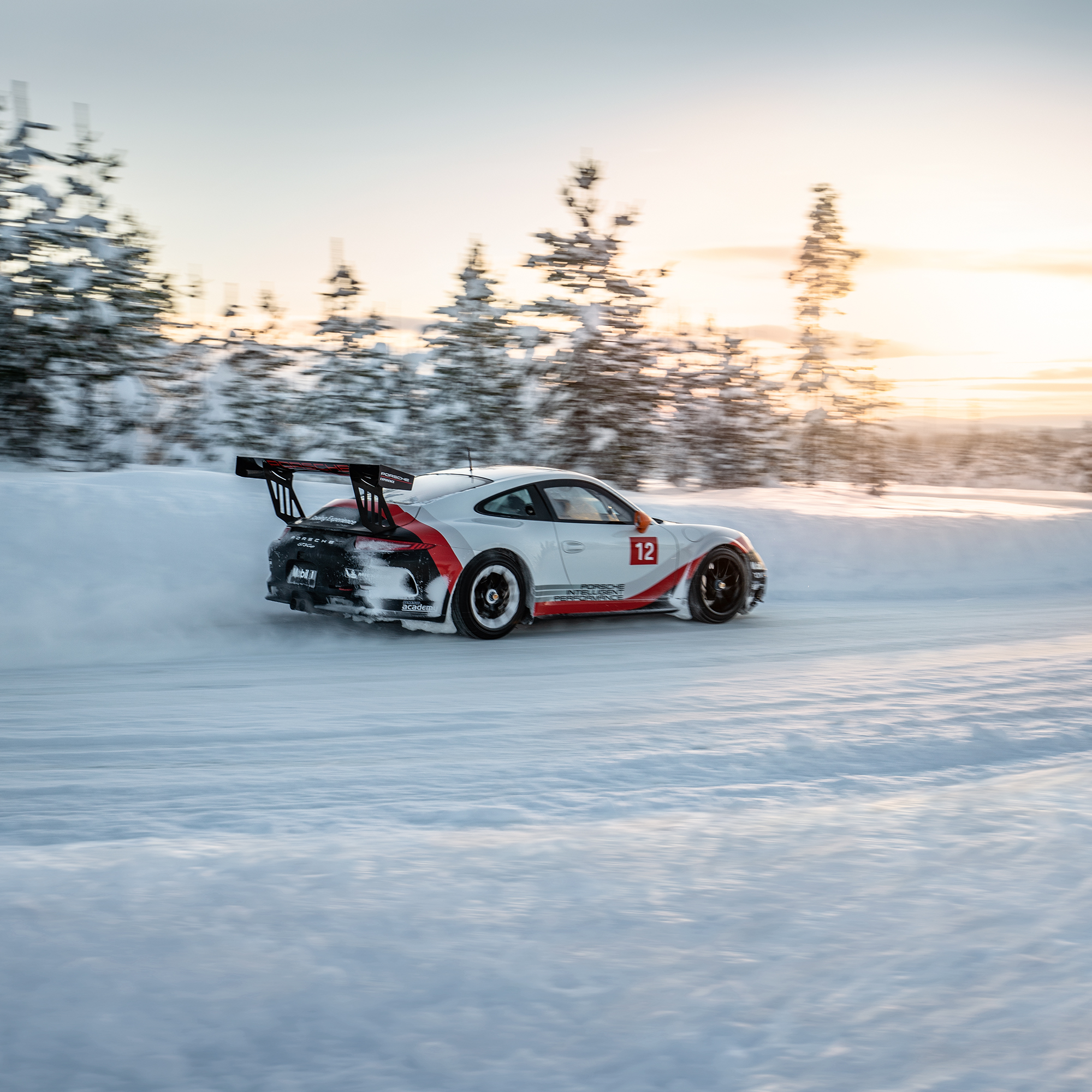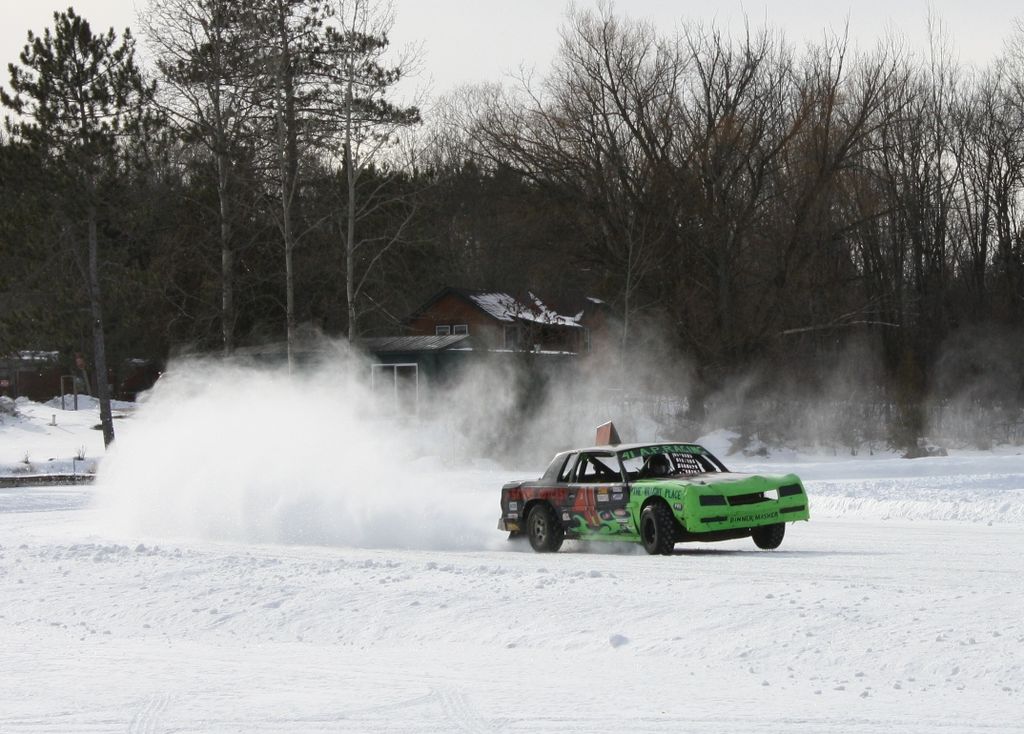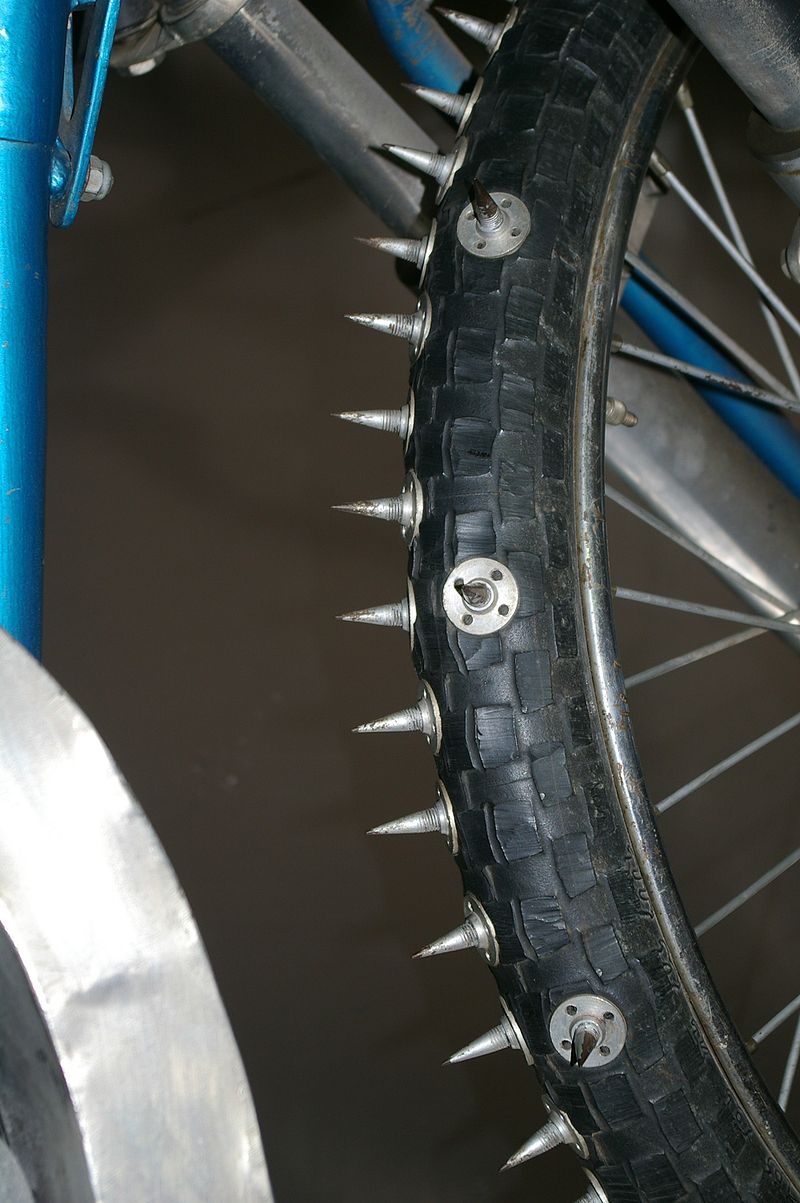Tracks: Tracks used for ice racing include ovals and road courses. Some tracks are dirt track racing tracks with the snow plowed off them. When there is no natural snow, an icy surface may be created by spraying the dirt surface with water when the temperature is below freezing. Artificial ice tracks (usually speed skating ovals) are used where it is not possible to construct natural ice tracks. Some tracks are made by plowing the snow off an area of a frozen lake. Spectators frequently park their cars around the outside of the track on a frozen lake.
In the UK ice meetings have been staged at ice rinks. The longest running event, at Telford, features riders using conventional machines with spiked tires. In the late 1960s, ice racing was staged at a number of rinks in Scotland but the machines used were really based machines with all-season tires.
In Nordic countries track are about one mile. Many tracks are very different.
Tires
Ice racing tires are either studded or non-studded. Studded tires have a stud such as a screw or a bolt to provide better traction and increased speed. Some studs are sharpened to increase penetration. Tires cannot be purchased with studs, so the pit crew needs to attach the studs to the tire. Through 2008, Menard’s Racing in Wisconsin manufactured and sold studded racing tires for cars, and they were required in many ice-racing classes. Cars with studded tires are generally required to contain a roll cage and increased safety equipment since they achieve much more speed with the greater cornering abilities.




